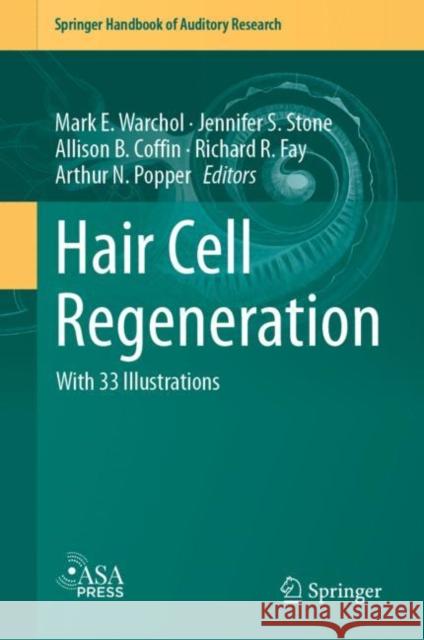Hair Cell Regeneration » książka
Hair Cell Regeneration
ISBN-13: 9783031206603 / Angielski / Twarda / 2023 / 278 str.
This volume provides a detailed update on progress in the field of hair cell regeneration. This topic is of considerable interest to academicians, clinicians, and commercial entities, including students of auditory and vestibular neuroscience, audiologists, otologists, and industry, all of whom may have interest in hair cell regeneration as a potential future therapy for hearing and balance dysfunction. In 2008, Springer published a SHAR volume on this subject (Hair Cell Regeneration, Repair, and Protection, Editors Richard Salvi and Richard Fay). Since that time, there has been considerable advancement in this field.This book provides a historical perspective on the field, but the emphasis is on more "prospective" views of the various facets of regeneration research, in the hope that the volume will stimulate new projects and approaches, focusing on the limitations of current knowledge and describing promising strategies for future work. The book will include the following key features of hair cell regeneration:• Cellular and molecular control hair cell regeneration in non-mammalian species (in particular zebrafish and chickens)• Our current understanding of the capacity for hair cell replacement in mammals (rodents and humans).• Signals controlling pro-regenerative behaviors in supporting cells, the hair cell progenitors.• New techniques that have been applied to study the genetic and epigenetic regulation of hair cell regeneration in mammals and non-mammals.• Contributions of stem cells toward building new tools to explore how hair cell regeneration is controlled and toward developing cells and tissue for therapeutic transplantation.• Studies that have applied gene and drug therapy to promote regeneration in mammals.
This volume provides a detailed update on progress in the field of hair cell regeneration. This topic is of considerable interest to academicians, clinicians, and commercial entities, including students of auditory and vestibular neuroscience, audiologists, otologists, and industry, all of whom may have interest in hair cell regeneration as a potential future therapy for hearing and balance dysfunction. In 2008, Springer published a SHAR volume on this subject (Hair Cell Regeneration, Repair, and Protection, Editors Richard Salvi and Richard Fay). Since that time, there has been considerable advancement in this field.This book provides a historical perspective on the field, but the emphasis is on more "prospective" views of the various facets of regeneration research, in the hope that the volume will stimulate new projects and approaches, focusing on the limitations of current knowledge and describing promising strategies for future work. The book will include the following key features of hair cell regeneration:• Cellular and molecular control hair cell regeneration in non-mammalian species (in particular zebrafish and chickens) • Our current understanding of the capacity for hair cell replacement in mammals (rodents and humans). • Signals controlling pro-regenerative behaviors in supporting cells, the hair cell progenitors. • New techniques that have been applied to study the genetic and epigenetic regulation of hair cell regeneration in mammals and non-mammals. • Contributions of stem cells toward building new tools to explore how hair cell regeneration is controlled and toward developing cells and tissue for therapeutic transplantation. • Studies that have applied gene and drug therapy to promote regeneration in mammals.











